CES 2012: Fujitsu Waterproof Phones and Tablets
The day before the official start of CES this year, I dropped my phone in a cup of coffee. The width of the phone just barely cleared the size of the cup and it was a one in a million shot. It only dropped in for a second, but it was long enough to short out my poor phone.
You can understand why I was obsessed with waterproofed phones and other gadgets because my entire life had just been short circuited by a simple cup of coffee. That’s why Fujitsu’s booth at CES this year was so appealing to me.
The first thing we saw as we walked past the booth was a huge aquarium with a working phones and tablets within it.
My eyes were immediately drawn to the brightly colored phone at the bottom of the aquarium. Was it really running or was that just a fake screen?
The girl at the booth saw my fascination and reached her long arm into the aquarium to retrieve it.
She removed it and handed to me. Yes, it was a fully functional phone that had been sitting in that aquarium for at least a couple of hours.
I was shocked and amazed. My poor phone had been in my coffee cup for no more than a couple of seconds and it was completely destroyed. This phone could take hours in an aquarium with no problem. And, it wasn’t just the phone, there was a tablet with the same capability!
I was drawn in to the bank of phones available for hands-on play.
They were called Arrows and I loved that they came in a wide variety of colors. They felt really good in my hand.
Unlike the iPhone, they are made of plastic, so I was shocked at how light they were in my hands. After years of holding wafers of glass and aluminum, I had forgotten how light a phone could be.
The Arrows wasn’t the only waterproof phone they were showcasing. There was also a phone that claimed to be the thinnest smartphone on the market.
Actually, they only claimed to be the thinnest phone to be accepted by the FCC, so there must be a thinner phone out there that is still waiting for approval.
It was an impressive design as well.
The specs of the phone were the disappointing aspect, however. They only run Android 2.3 (Gingerbread), so they are a few versions behind the curve and no guarantee that I’d be able to upgrade to Ice Cream Sandwich when it comes out.
I was really attracted to the waterproof feature of these Fujitsu phones, but I have been less than impressed with Android Gingerbread. The fact that these phones use an operating system that is so far behind makes them unsuitable for me, so I kept on looking.

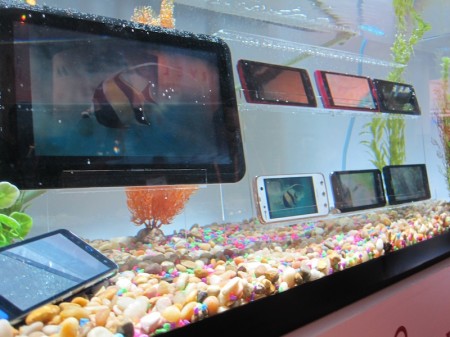
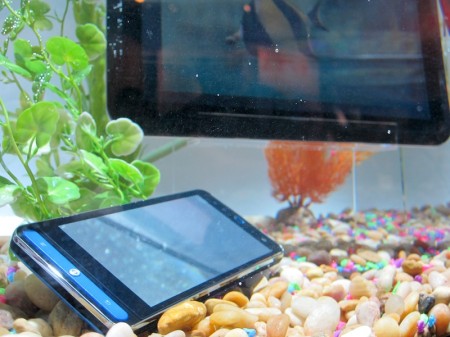
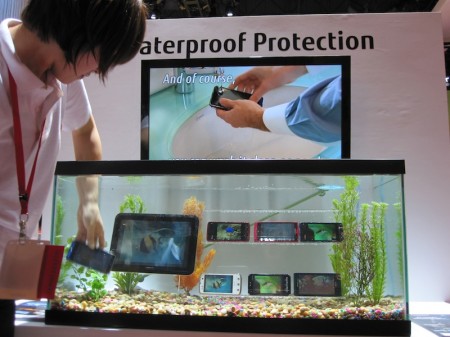
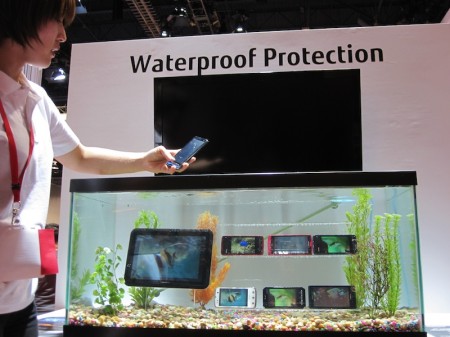

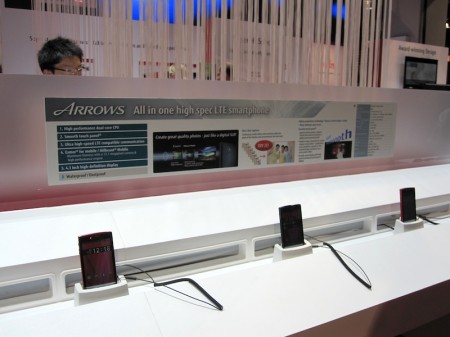
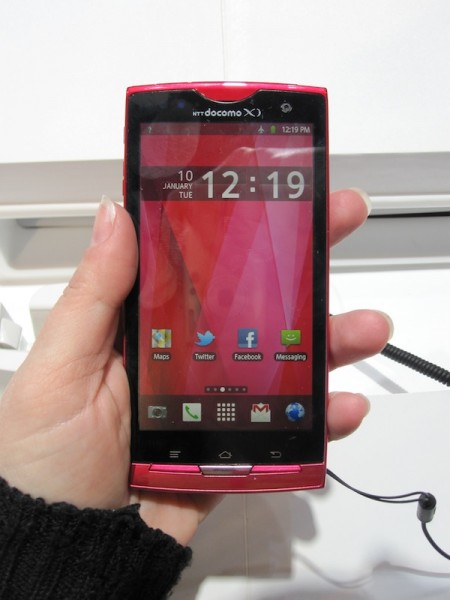
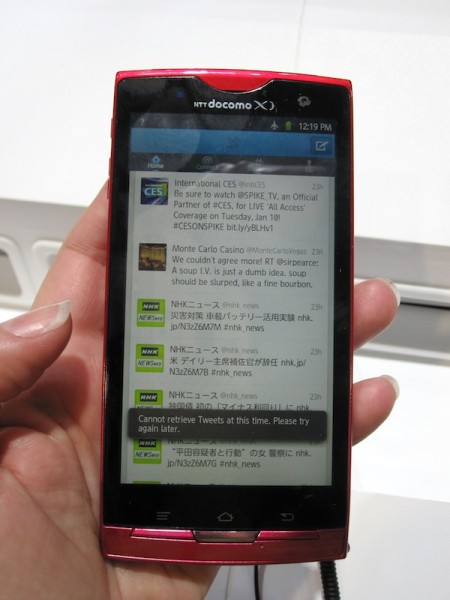
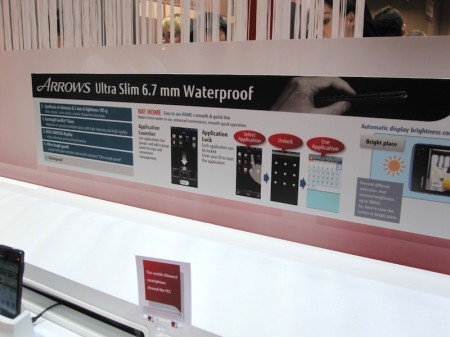
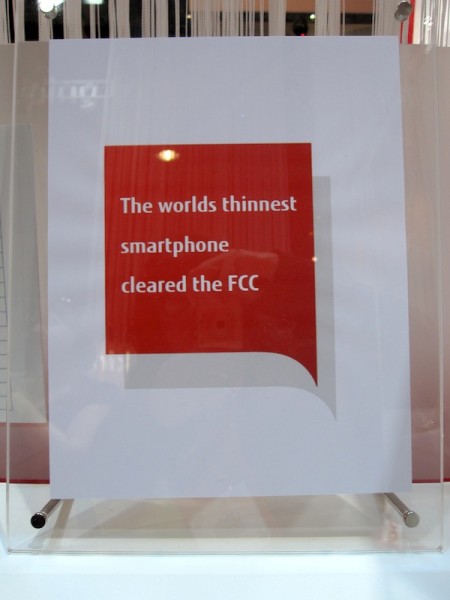
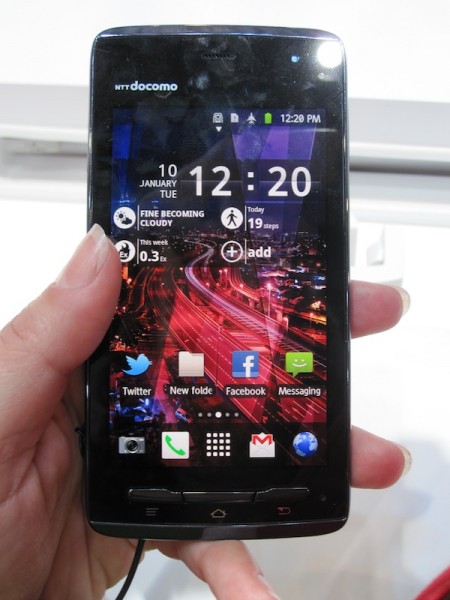
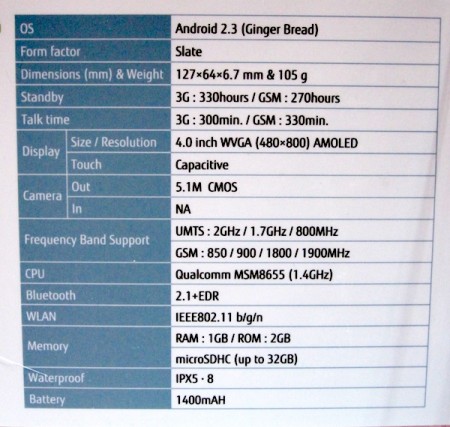


 When I used to browse the web and find something I wanted to remember, I’d bookmark it with a description of what it was. I’m crafty, so I would do this with crafts. I also have three kids so I’d bookmark an educational site or ideas for decorating.
When I used to browse the web and find something I wanted to remember, I’d bookmark it with a description of what it was. I’m crafty, so I would do this with crafts. I also have three kids so I’d bookmark an educational site or ideas for decorating.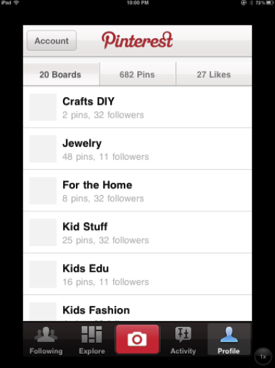 I knew there had to be a better way, and stumbled upon it a few days later, when my sister-in-law was telling me about her new favorite site –
I knew there had to be a better way, and stumbled upon it a few days later, when my sister-in-law was telling me about her new favorite site –  As you can see there is a wide variety of crafts to choose from.
As you can see there is a wide variety of crafts to choose from.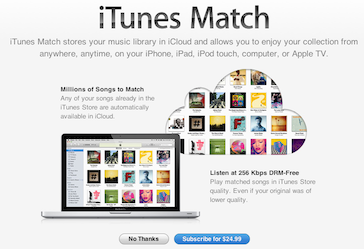
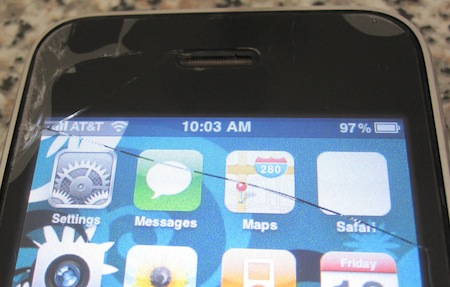 I was first in line the night of pre-orders for the new iPhone 4S because my poor 3GS had seen better days. After skipping a generation, there are so many new features to enjoy on my new phone that I’ve felt a little overwhelmed with all of it.
I was first in line the night of pre-orders for the new iPhone 4S because my poor 3GS had seen better days. After skipping a generation, there are so many new features to enjoy on my new phone that I’ve felt a little overwhelmed with all of it. 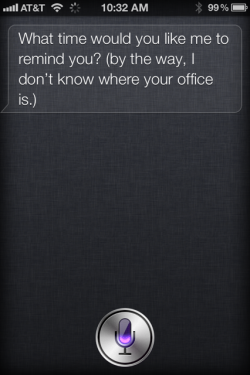 Additionally, I had particular problems telling Siri where my work and home are. It’s perfectly easy to tell her to remind me when I leave “here,” but if I want to have her remind me to call Mike when I arrive at work, she would tell me that she didn’t know where my office is. I added my work address into my contact information and the iPhone was able to find it on a map when I tapped on it, but Siri still insisted that she didn’t know where my office was.
Additionally, I had particular problems telling Siri where my work and home are. It’s perfectly easy to tell her to remind me when I leave “here,” but if I want to have her remind me to call Mike when I arrive at work, she would tell me that she didn’t know where my office is. I added my work address into my contact information and the iPhone was able to find it on a map when I tapped on it, but Siri still insisted that she didn’t know where my office was. 
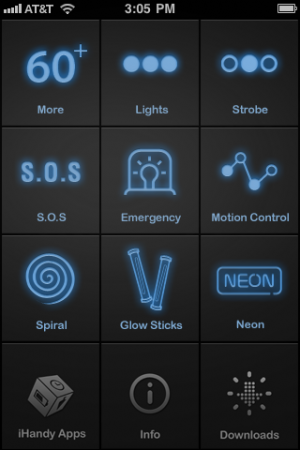 When you first run this app, you will come to this selection screen. Along with the regular flashlight there are many other settings you can use for different purposes.
When you first run this app, you will come to this selection screen. Along with the regular flashlight there are many other settings you can use for different purposes. If you slide you finger along the selection screen from left to right it will bring to this screen. In this mode, you can set if and how fast the lights will turn on and off along with setting it to say S.O.S. in Morse code. The numbers at the bottom of the screen control the speed of the light flashing. I prefer this mode when using the flashlight, but unless you swipe correctly, it is difficult to find.
If you slide you finger along the selection screen from left to right it will bring to this screen. In this mode, you can set if and how fast the lights will turn on and off along with setting it to say S.O.S. in Morse code. The numbers at the bottom of the screen control the speed of the light flashing. I prefer this mode when using the flashlight, but unless you swipe correctly, it is difficult to find.